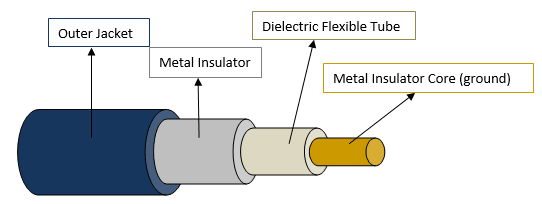
<< radio home
<< index
by disinfoniacs #69 & #1
>>>>
In the vast, intricate web of radio communications, one might easily overlook the humble yet vital role played by antenna cables, for their importance in ensuring the efficient operation of any station is beyond dispute. Comparable to the folly of selecting a meager lamp cord to power the voracious energy demands of a clothes dryer, the performance properties of coaxial cables are paramount.

The coaxial cable, that ubiquitous serpent winding its way through the arteries of amateur radio antenna systems, is favored not only for its ease of use, but also for its minimal installation considerations. With an impedance of 50 ohms, it provides a common and reliable foundation for the avid ham enthusiast.

As you ponder the distinctions between the RG-58 and RG-213 cable, an electrical chasm becomes evident: the RG-213 boasts a reduced loss at any given frequency. In this arcane realm of transmission lines, the frequency of the signal you employ must be understood, for with each incremental increase in frequency comes a proportional escalation of loss. Within the higher echelons of VHF and UHF frequencies, air-insulated hard line reigns supreme, boasting the lowest loss.
But to bridge the gap between these cables, one must venture into the realm of coax connectors. A plethora of connectors await the discerning radio operator, including the PL-259, Type N, and even the diminutive SMA. In the domain of HF and VHF frequencies, the PL-259 connector holds sway. Ascending beyond 400 MHz, the Type N connector emerges as the preferred choice.

Behold the image before you, depicting a cable with an SO-239 connector on the left, and a PL-259 on the right. To circumvent the pitfalls of wasted time and money, it behooves one to scrutinize one's equipment prior to procuring the appropriate cable and connectors.
<< previous lesson | next lesson >>
---
<< radio home
<< index
